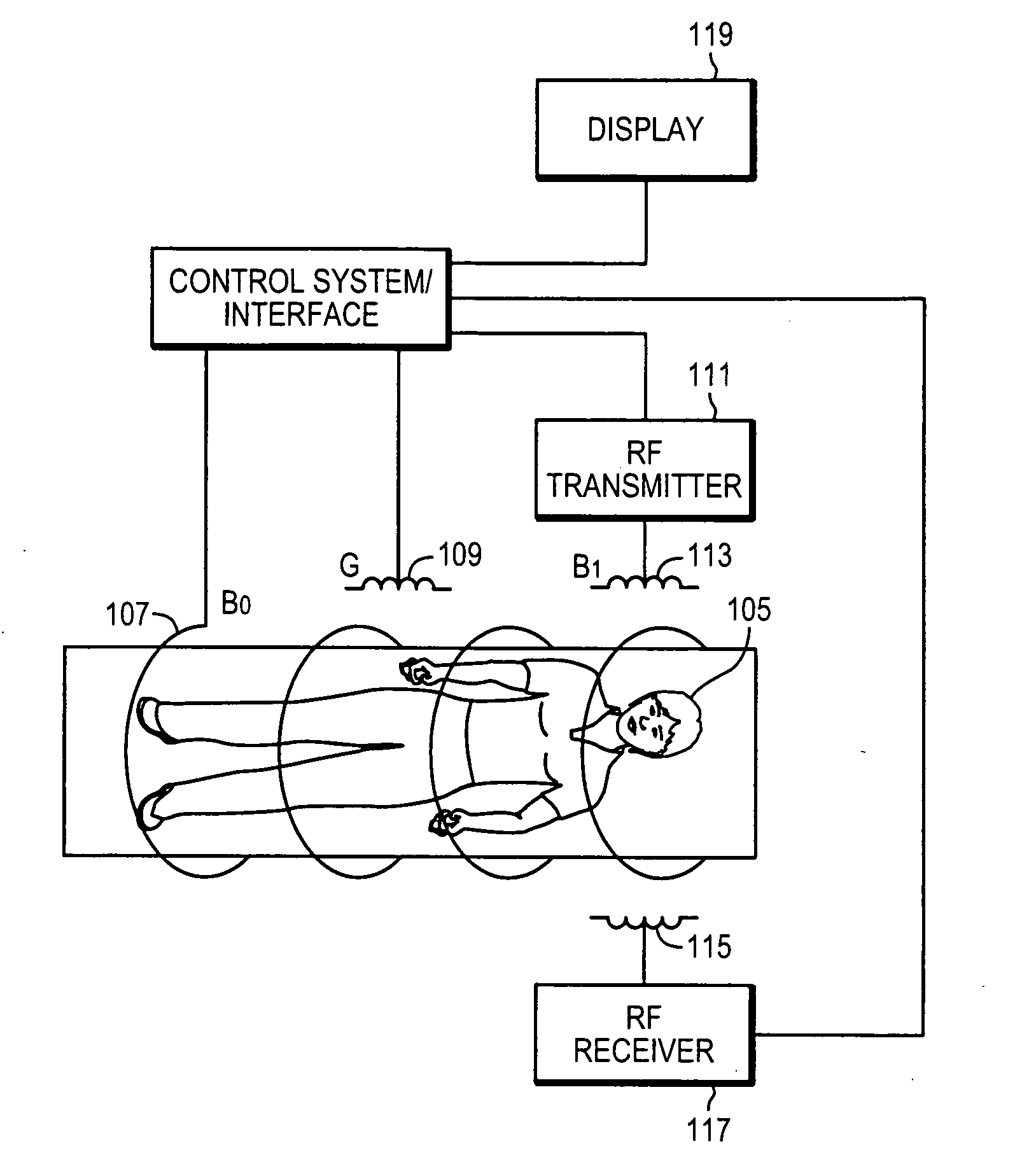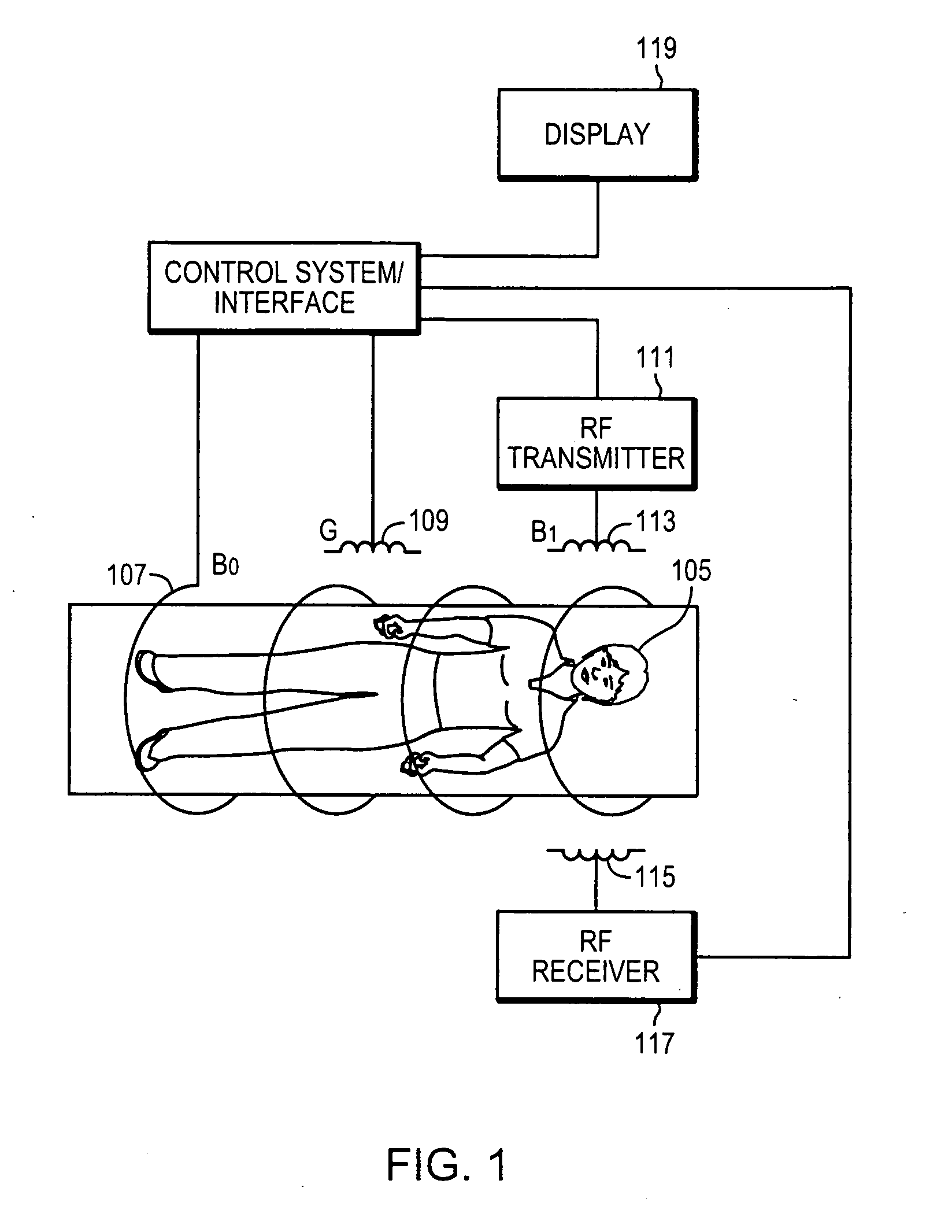Magnetic resonance imaging of coronary venous structures
a magnetic resonance imaging and coronary venous technology, applied in the field of magnetic resonance imaging of coronary venous structures, can solve the problems of inapplicability of conventional coronary mri methods, inability to use established contrast preparation sequences based on tsub>2 /sub>, and inability to achieve the effect of enhancing the contrast between venous blood and myocardium, suppressing coronary vein signals, and improving blood-myocardial contras
- Summary
- Abstract
- Description
- Claims
- Application Information
AI Technical Summary
Benefits of technology
Problems solved by technology
Method used
Image
Examples
Embodiment Construction
[0029]A description of example embodiments of the invention follows.
[0030]A representative magnetic resonance imaging (MRI) system 101 is shown in FIG. 1. The system includes a control system / interface 103 that is programmed with a series of commands to perform a sequence of imaging steps. The controller 103 controls a field coil 107 for producing a stationary magnetic field B0, one or more gradient coils 109 for producing gradient magnetic fields, G, and a radiofrequency (RF) transmitter 111 configured to generate RF pulses that are applied to a transmitter coil 113 to produce an RF magnetic field, B1. A receiver coil 115 detects changes in the magnetization of the object being imaged, and transmits these signals to an RF receiver 117. The receiver 117 converts these signals into electrical signals that can be processed by the control system 103 to produce an image of an object 105 located within the MRI system. The image can be viewed on a display apparatus 119.
[0031]The principle...
PUM
 Login to View More
Login to View More Abstract
Description
Claims
Application Information
 Login to View More
Login to View More - R&D
- Intellectual Property
- Life Sciences
- Materials
- Tech Scout
- Unparalleled Data Quality
- Higher Quality Content
- 60% Fewer Hallucinations
Browse by: Latest US Patents, China's latest patents, Technical Efficacy Thesaurus, Application Domain, Technology Topic, Popular Technical Reports.
© 2025 PatSnap. All rights reserved.Legal|Privacy policy|Modern Slavery Act Transparency Statement|Sitemap|About US| Contact US: help@patsnap.com



